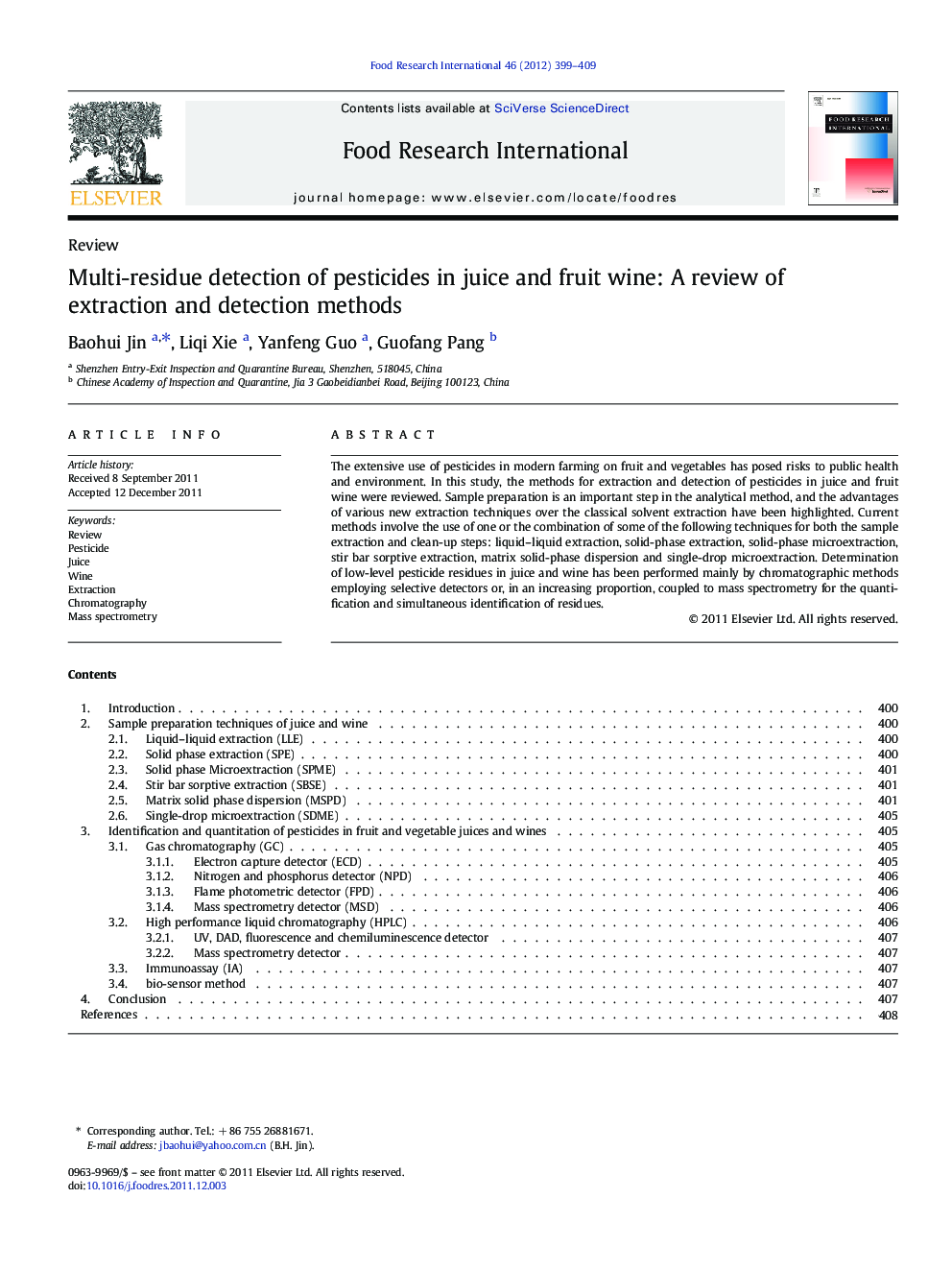| Article ID | Journal | Published Year | Pages | File Type |
|---|---|---|---|---|
| 4561926 | Food Research International | 2012 | 11 Pages |
The extensive use of pesticides in modern farming on fruit and vegetables has posed risks to public health and environment. In this study, the methods for extraction and detection of pesticides in juice and fruit wine were reviewed. Sample preparation is an important step in the analytical method, and the advantages of various new extraction techniques over the classical solvent extraction have been highlighted. Current methods involve the use of one or the combination of some of the following techniques for both the sample extraction and clean-up steps: liquid–liquid extraction, solid-phase extraction, solid-phase microextraction, stir bar sorptive extraction, matrix solid-phase dispersion and single-drop microextraction. Determination of low-level pesticide residues in juice and wine has been performed mainly by chromatographic methods employing selective detectors or, in an increasing proportion, coupled to mass spectrometry for the quantification and simultaneous identification of residues.
► In this study, the methods for extraction and detection of pesticides in juice and fruit wine were reviewed ► Current methods involve the use of one or the combination of some of the following techniques for both the sample extraction and clean-up steps: liquid–liquid extraction, solid-phase extraction (SPE), gel-permeation chromatography (GPC), matrix solid-phase dispersion (MSPD), etc. ► Determination of residues at the low levels found in juice and wine has been performed mainly by chromatographic methods employing selective detectors or, in an increasing proportion, coupled to mass spectrometry for the quantification and simultaneous identification of residues.
